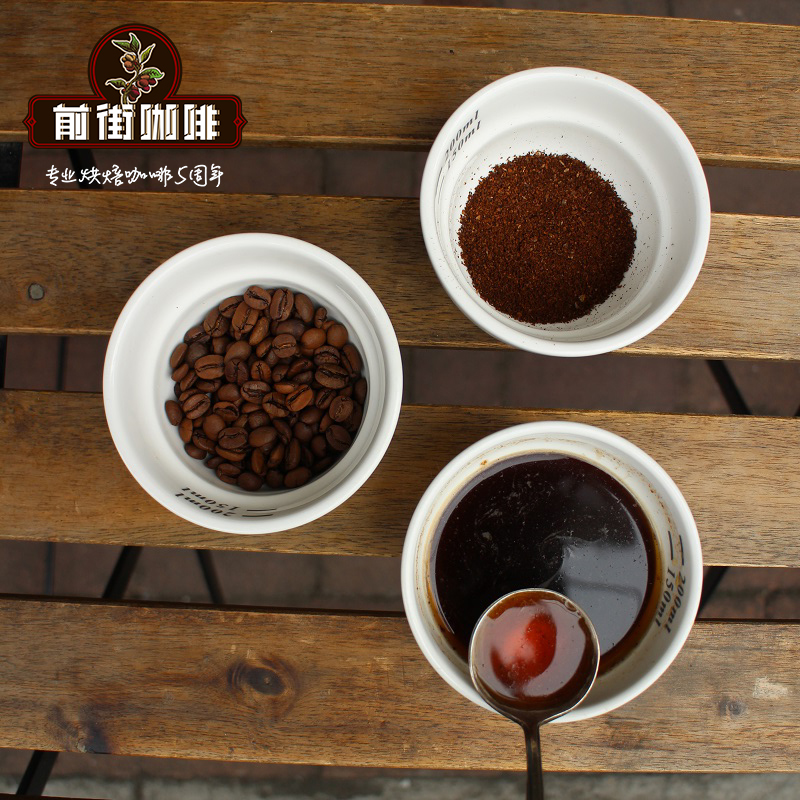What is the taste of pressure honey treatment in Cretika Manor, Costa Rica? Pressure honey treatment belongs to

Professional coffee knowledge exchange more coffee bean information please follow the coffee workshop (Wechat official account cafe_style)
What is the taste of pressure honey treatment in Cretika Manor, Costa Rica? Does pressure honey treatment belong to aerobic or anaerobic fermentation?
◎ producing area: West Valley
◎ varieties: Caturra, Catuai
◎ altitude: 1750 m
Flavor: green apple, raisin, walnut, black sugar, raw chocolate, sarsack
* what is meant by 'stress honey treatment'?
100% ripe fruit is harvested manually to remove the pulp from the treatment plant and carry out 'anaerobic fermentation'. The average fermentation time is 24 hours and then sent to the greenhouse for 4 days to remove the pectin layer, then placed in the African bed for 18-20 days for the final drying operation, and finally the coffee is sealed in a bucket.
Qianjie recommended cooking method: hand flushing
Degree of grinding: 3.5 (Japanese little Fuji R440)
V60 filter cup, 15g powder, water temperature 90 degrees, grinding 3.5, powder / water ratio 1:15
Steaming in 30 grams of water for 30 seconds
Section: water injection to 120g cut off, slow water injection to 225g
That is, 30-120-225g
The four elements of this approach-
1. Shade system
The shade system can effectively block out the sun, so that the pulp can produce more sugar, thus making the final coffee more sweet and wonderful and shiny sour.
2. Stainless steel container
Coffee beans are fermented in stainless steel containers as soon as they are picked, instead of using traditional cement or ceramic tile containers, which absorb the flavor of coffee beans rather than retain more of the flavor in the pulp of coffee. The flavor of coffee can be made cleaner by using stainless steel containers.
3. Carbon dioxide
The container in which the coffee beans are placed is then sealed and pressurized with carbon dioxide so that there is no oxygen in the container. This ensures that the flavor and aroma of all the coffee are retained in the coffee, and the flavor of the coffee is more obvious.
4. Controllable temperature
Finally, these containers of coffee beans are placed in a controlled environment to control more of the factors that replicate the same flavor of coffee beans. However, the traditional treatment methods are affected by weather, humidity and other factors, so it is difficult to ensure that the flavor of beans treated each time is consistent.
Pressure honey treatment is now very ramming kind of anaerobic treatment. Most of them are called anaerobic fermentation or pressure honey treatment. If you translate directly from the production area, it is the treatment of pressure honey. It is like making wine, putting the removed coffee pulp and pectin coffee beans into a bucket to ferment, and the pressure in the bucket slows down the fermentation rate, so the taste of those cinnamon biscuits is also the product of anaerobic fermentation.
What are the steps of honey treatment?
Honey treatment can
First of all, coffee farmers should select ripe coffee cherries from coffee trees, then peel off the outer skin and retain the pectin layer. The pectin layer retains a high proportion of sugar and acid, which are the key to honey treatment. It is the most complex and exquisite place for honey treatment: exposure.
The time must be mastered well, and the length of time is the key. If the exposure time is too short, it is impossible to convert the substance of the pectin layer into the coffee beans, and the time cannot be too long, and the action must be fast to avoid excessive fermentation inside the beans and become moldy beans.
So how do you strike a balance?
For the first few days of placing the beans on the sun scaffolding or cement floor, turn the beans several times an hour until they reach the desired moisture content, a step that usually takes 6-10 hours. You need to turn it at least once a day for the next 6-8 days. It takes a lot of time, huh? The reason why honey treatment is so time-consuming is that beans absorb moisture from the air every night, so that it takes more time to expose themselves the next day.
When the coffee is exposed, it can be dried and roasted, just like other treatments.
Why is honey treatment so popular with coffee farmers?
At first, some people saw that this treatment could continuously improve the quality of their coffee beans, which originated in Costa Rica, and this treatment is now ramming.
So why did coffee farmers in Costa Rica plan to treat it with honey in the first place?
When coffee farmers want to improve the quality or price of their coffee, they have three choices: change the species of coffee, change the altitude of planting, and change the method of treatment. Just like most people who brew coffee, they will want to use relatively simple ways, such as adjusting the grinding scale and the amount of powder, and then adjusting the amount of water, pressure and temperature of the coffee machine. Most coffee farmers also want to change the method of treatment first. then they will consider planting new tree species or moving the manor, which requires more time and a lot of money.
Why is honey treatment so beautiful?
When honey treatment is so difficult and time-consuming, you may wonder if it's really worth it.
There is no doubt that it is worth it.
Honey-treated coffee generally has a great sweet taste and balanced sour taste, the flavor is not as strong as sun-cured coffee, but it is more fresh and mellow, why not?
The key to this flavor difference comes from the sugar and acid content of the pectin layer. During exposure, the sugar in the pectin layer becomes more and more concentrated, and these sugars seep into the coffee beans.
The next steps are not simple, time-consuming and detail-oriented.
Important Notice :
前街咖啡 FrontStreet Coffee has moved to new addredd:
FrontStreet Coffee Address: 315,Donghua East Road,GuangZhou
Tel:020 38364473
- Prev

Hand-made Hatchilla Coffee Bean course _ Hachilla Coffee how much is a cup of coffee _ Hachilla name source story
Professional coffee knowledge exchange more coffee bean information please follow Coffee Workshop (Wechat official account cafe_style) 90 + Hachilla Coffee Ninety plus Hachira N2 hand-made and Love Hot Press name: 90+NinetyPlus Hachira (Hachilla) Variety: ancient excellent original species Heirlooms treatment: sun production area / Manor: Wellega/Sidama, Yirgacheffe
- Next

90 + boutique coffee beans Hatchilla Hachira how much is a pack _ Hachilla coffee beans how good to drink
Professional coffee knowledge exchange more coffee bean information please follow the coffee workshop (Wechat official account cafe_style) 90 + boutique coffee Hachira HACHIRA Hachilla coffee is from 2006-2008 and S.A Bagersh co-developed Aricha, has a great fruity and floral flavor, as well as quite concentrated elderberry and BlackBerry, sometimes with
Related
- Detailed explanation of Jadeite planting Land in Panamanian Jadeite Manor introduction to the grading system of Jadeite competitive bidding, Red bid, Green bid and Rose Summer
- Story of Coffee planting in Brenka region of Costa Rica Stonehenge Manor anaerobic heavy honey treatment of flavor mouth
- What's on the barrel of Blue Mountain Coffee beans?
- Can American coffee also pull flowers? How to use hot American style to pull out a good-looking pattern?
- Can you make a cold extract with coffee beans? What is the right proportion for cold-extracted coffee formula?
- Indonesian PWN Gold Mandrine Coffee Origin Features Flavor How to Chong? Mandolin coffee is American.
- A brief introduction to the flavor characteristics of Brazilian yellow bourbon coffee beans
- What is the effect of different water quality on the flavor of cold-extracted coffee? What kind of water is best for brewing coffee?
- Why do you think of Rose Summer whenever you mention Panamanian coffee?
- Introduction to the characteristics of authentic blue mountain coffee bean producing areas? What is the CIB Coffee Authority in Jamaica?

